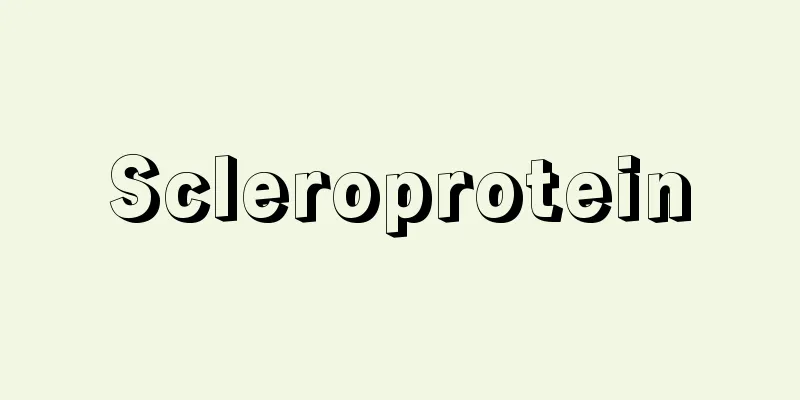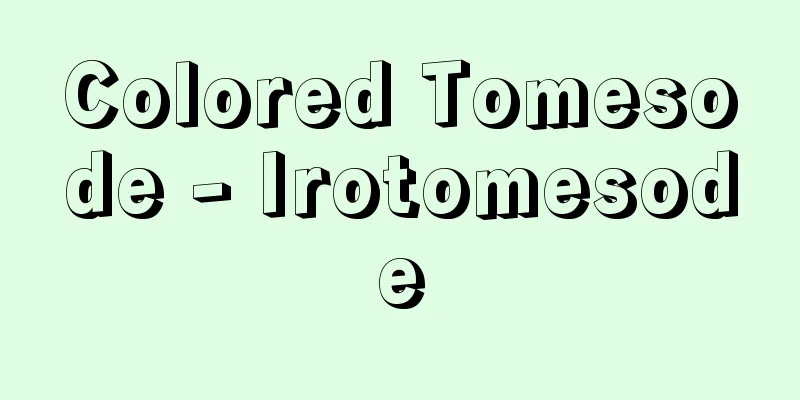Scleroprotein

|
When proteins are roughly classified according to their solubility in water, low salt solutions, weak acids, weak alkalis, and alcohol, albuminoids refer to a group of simple proteins that are insoluble in all of them, unlike albumins, globulins, and prolamins. Many of them play a structural role as supporting and skeletal substances in animal tissues, and do not have enzyme-like activity. Examples include collagen (types I to XVIII) found in bones, skin, tendons, and cartilage; keratin found in horns, hair, and nails; elastin found in blood vessels; fibroin found in silk thread; resinin found in the exoskeletons of arthropods, especially insects; spongin found in sponges; gorgonin found in corals; and conchiolin found in mussel shells. Resinin has a trityrosine structure in which three tyrosines are linked together via a benzene ring. Collagen and fibroin can be dissolved in dilute acetic acid and salt solutions, and research into their properties is progressing. Collagen and elastin have characteristic amino acid sequences and gradually become insoluble due to the formation of intermolecular crosslinks (structures) such as dehydrolysinonorleucine and desmosine, respectively, and their relationship to aging has attracted attention. These proteins are cleaved and fragmented at characteristic amino acid sequences by specific proteases, such as collagenase, elastase, and keratinase, and are further decomposed into amino acids by other proteases. Although the sea urchin fertilization membrane cannot necessarily be considered a hard protein, the hatching enzyme envelysin that dissolves the fertilization membrane during hatching is a member of the matrix metalloproteinase group, which also includes mammalian collagenase. [Koji Nomura] "Natural and Biopolymer Materials for the 21st Century" edited by Takeaki Miyamoto et al. (1998, CMC) "The Story of Collagen" by Daizaburo Fujimoto (1999, Tokyo Kagaku Dojin) [References] | | | | | | | | | | | |Source: Shogakukan Encyclopedia Nipponica About Encyclopedia Nipponica Information | Legend |
|
タンパク質を水や低塩溶液、弱酸、弱アルカリ、アルコールに対する溶解度によって大まかに分類した場合、アルブミン、グロブリン、プロラミンなどと違い、すべてに不溶性の単純タンパク質の一群をさし、アルブミノイドともよばれた。動物組織の支持物質や骨格物質として構造的役割を果たすものが多く、酵素のような活性をもつものではない。骨、皮、腱(けん)、軟骨などのコラーゲン(Ⅰ型からⅩⅧ型)をはじめ、角(つの)、毛、爪(つめ)などのケラチン、血管などのエラスチン、絹糸のフィブロイン、節足動物とくに昆虫の外骨格のレジリン、海綿のスポンジン、サンゴのゴルゴニン、イガイの殻のコンキオリンなどがある。レジリンはチロシン三つがベンゼン環を介して連結したトリチロシン構造をもっている。コラーゲンやフィブロインは薄い酢酸や塩溶液に溶かすことができ、研究が進んでいる。コラーゲンやエラスチンは特徴的なアミノ酸配列をもち、それぞれ、デヒドロリジノノルロイシンやデスモシンのような分子間架橋(構造)が形成されてしだいに不溶化し、老化との関連が注目されている。 これらのタンパク質は、それぞれに特異的なプロテアーゼであるコラーゲナーゼ、エラスターゼ、ケラチナーゼなどによりそれぞれ特徴的なアミノ酸配列の個所で切断を受け、断片化され、さらに別のプロテアーゼにより、アミノ酸まで分解される。 なお、ウニの受精膜はかならずしも硬タンパク質とはいえないが、孵化(ふか)するときに受精膜を溶かす孵化酵素、エンベライシンenvelysinは哺乳(ほにゅう)類のコラーゲナーゼなどを含むマトリックスメタロプロテアーゼグループの一員である。 [野村晃司] 『宮本武明他編『21世紀の天然・生体高分子材料』(1998・シーエムシー)』▽『藤本大三郎著『コラーゲン物語』(1999・東京化学同人)』 [参照項目] | | | | | | | | | | | |出典 小学館 日本大百科全書(ニッポニカ)日本大百科全書(ニッポニカ)について 情報 | 凡例 |
<<: Storytelling book - Kodanbon
Recommend
innerweltliche Askese
Following Marx's lead, he named this force &q...
Grass - Grass
The opposite of tree. Unlike trees, there is a li...
Critical concentration - GENKAINOUDO
A measure of the sensitivity of a detection react...
Curved Panel Structure
Please see the "Shell Structure" page. ...
counselor
…The word diplomacy comes from the Greek word dip...
Equivalent
A street vendor who sells at festivals, fairs, and...
Line printer - Line printer
A type of computer output device that can print c...
Bai Qi; Pai-Ch`i
[raw]? [Died] King Zhao 50 (257 BCE) A military co...
Anekoji-shi - Anekoji-shi
(1) A nobleman of the Kan'in line of the Nort...
Giant river snail - Okawanina
...It is found in the southern part of Hokkaido t...
Yoshimitsu Murakami
A warrior in the late Kamakura period. Son of Nob...
Harvest Moon
...It is not widely cultivated in Japan because i...
Alēktō (English spelling) Alekto
...When they appeared on stage as choruses in the...
Tapirus pinchaque (English spelling)
…[Mizuho Sawada]. … *Some of the terminology that...
Barnacles - barnacle
A general term for crustaceans belonging to the cl...









